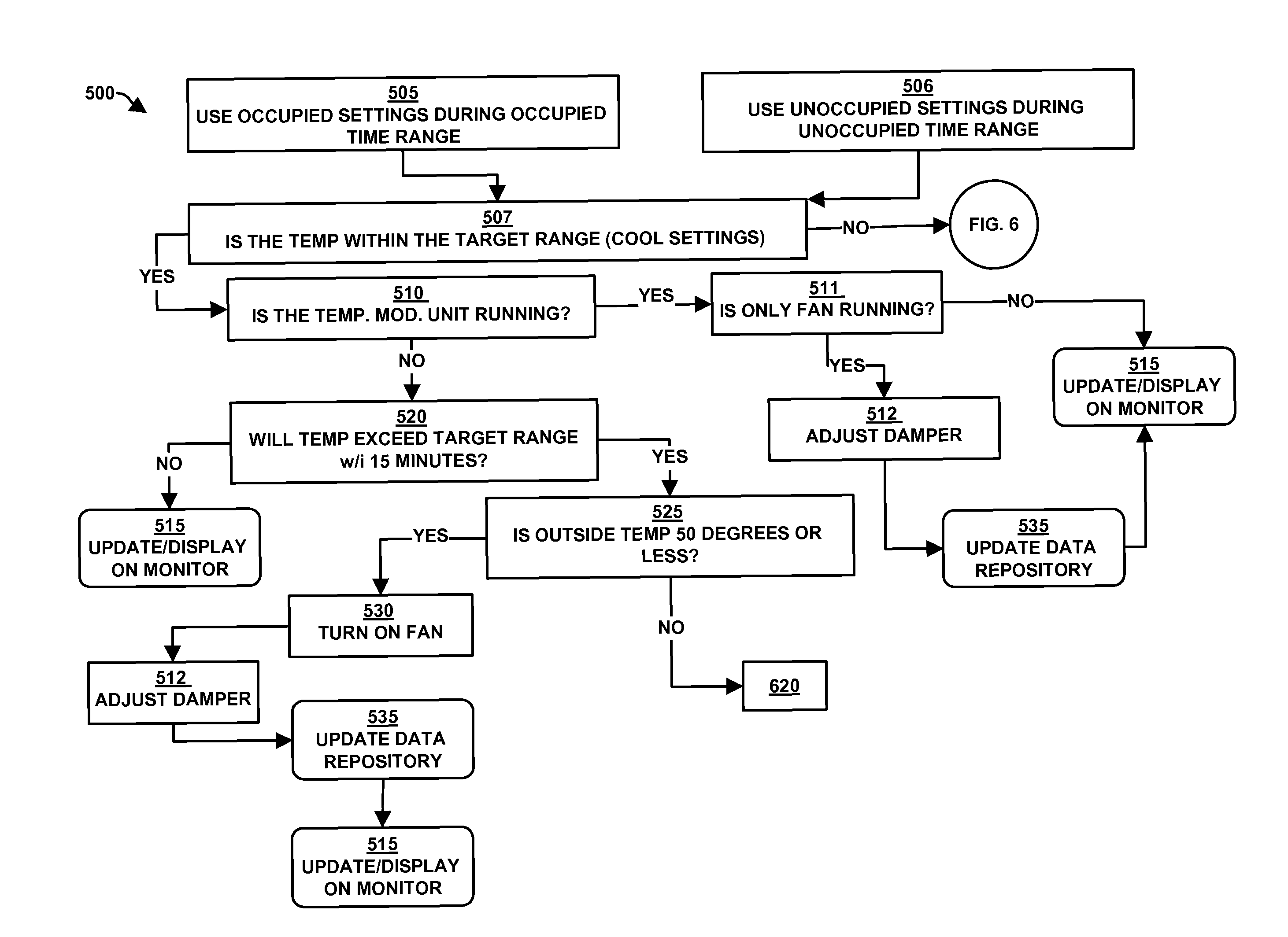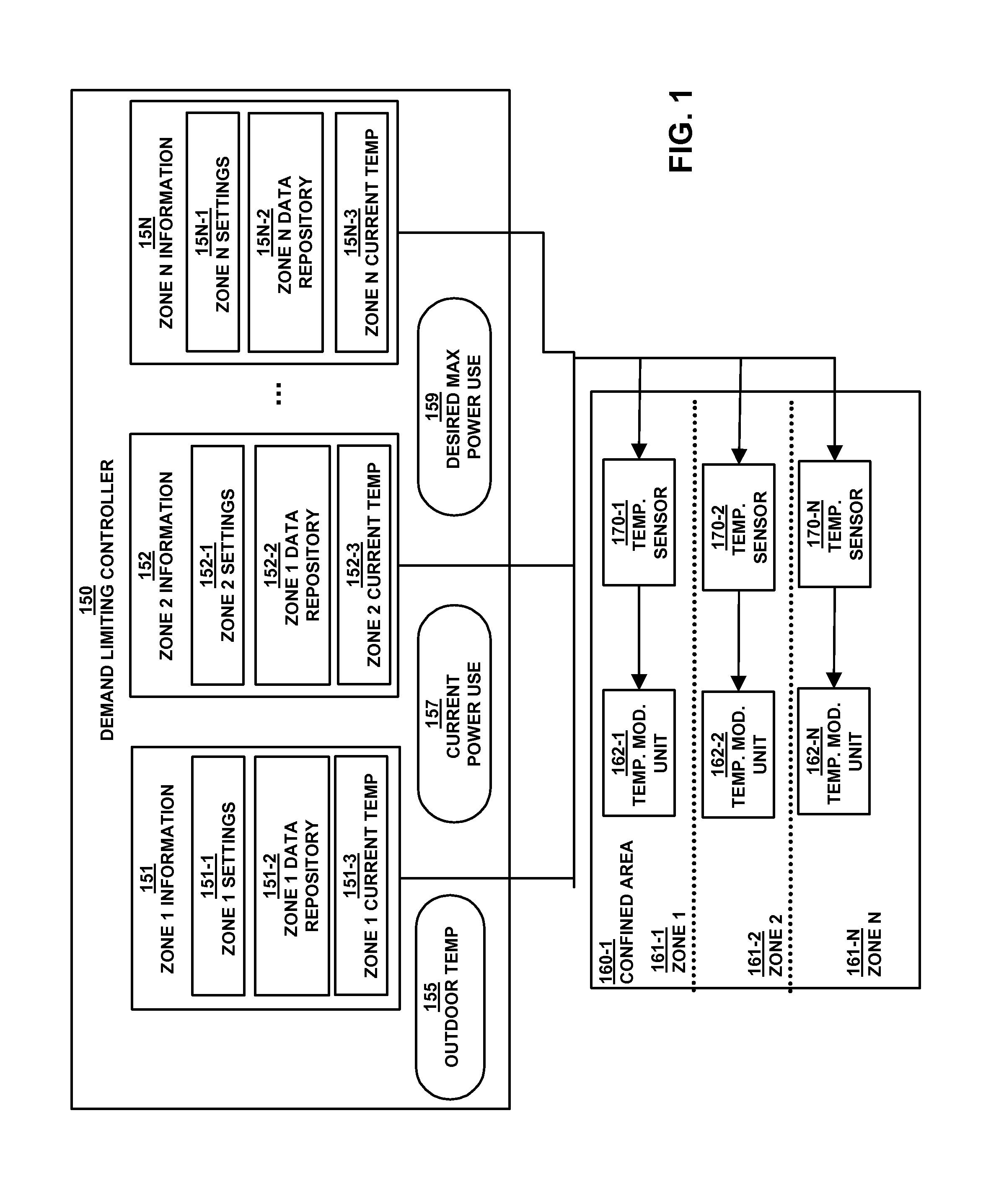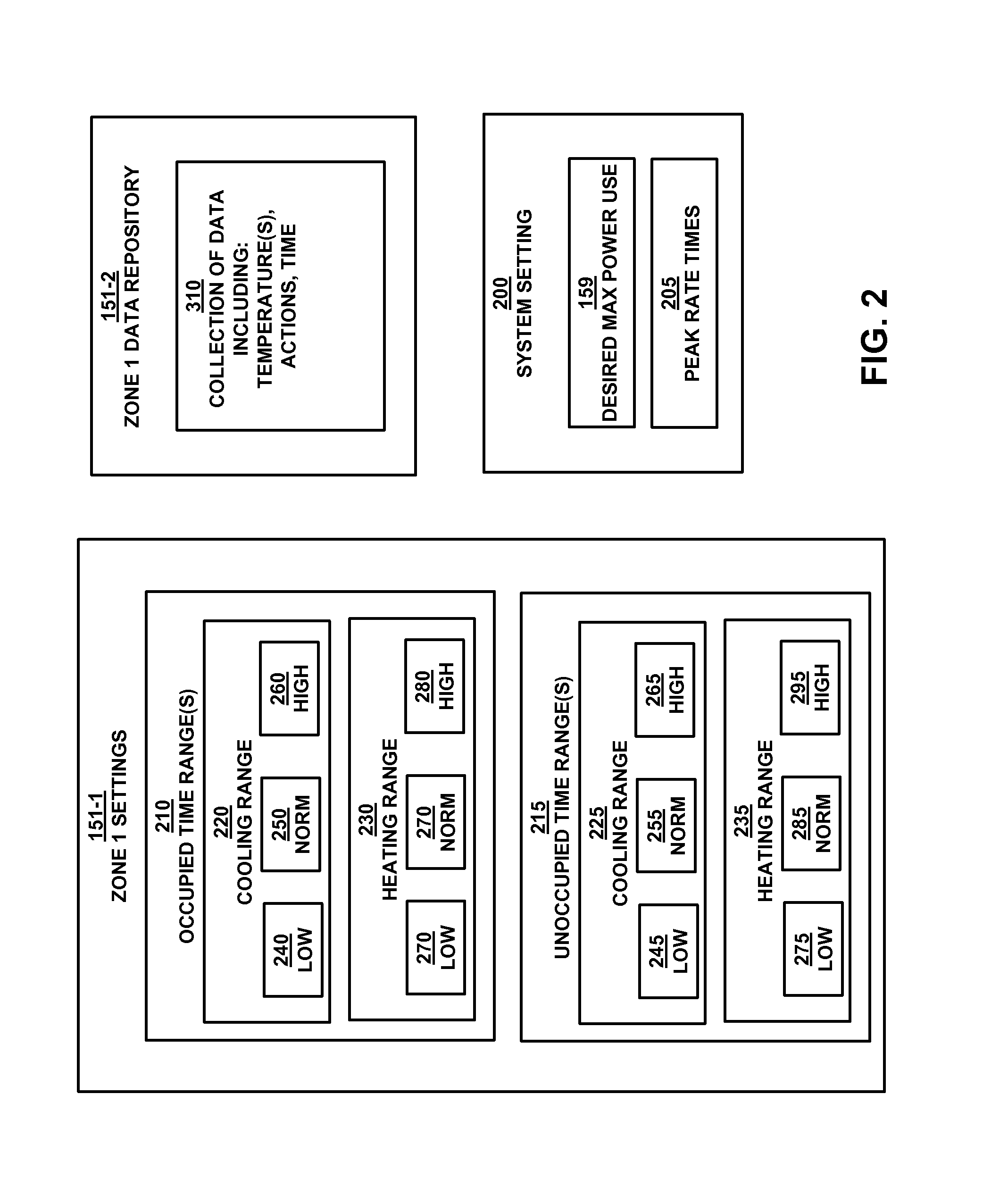Method and apparatus for effecting temperature difference in a respective zone
- Summary
- Abstract
- Description
- Claims
- Application Information
AI Technical Summary
Benefits of technology
Problems solved by technology
Method used
Image
Examples
Embodiment Construction
[0032]FIG. 1 is an example block diagram of a demand limiting controller 150 according to embodiments herein.
[0033]A confined area 160-1, such as a commercial, industrial, retail, office, residential or hotel building or a warehouse or a refrigeration / freezer unit(s), can be divided into multiple internal zones 161-1, 161-2, 161-N. Each zone 161-1, 161-2, 161-N can be an internal space within the confined area 160-1. Further, each zone 161-1, 161-2, 161-N is associated with a temperature modification unit(s) 162-1, 162-2, 162-N that can control the rate of the temperature change with a respective zone 161-1, 161-2, 161-N. It is understood that the confined area 160-1 can be divided into any number of zones across any number of buildings, warehouses or refrigeration / freezer units, and each zone 161-1, 161-2, 161-N can be associated with any number of temperature modification units.
[0034]The demand limiting controller 150 stores, manages and continually updates zone information 151, 1...
PUM
 Login to View More
Login to View More Abstract
Description
Claims
Application Information
 Login to View More
Login to View More - R&D
- Intellectual Property
- Life Sciences
- Materials
- Tech Scout
- Unparalleled Data Quality
- Higher Quality Content
- 60% Fewer Hallucinations
Browse by: Latest US Patents, China's latest patents, Technical Efficacy Thesaurus, Application Domain, Technology Topic, Popular Technical Reports.
© 2025 PatSnap. All rights reserved.Legal|Privacy policy|Modern Slavery Act Transparency Statement|Sitemap|About US| Contact US: help@patsnap.com



